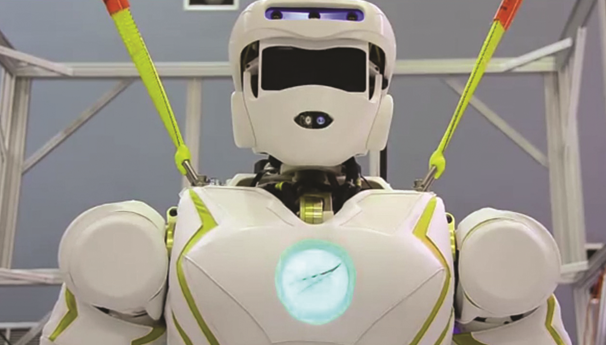“To boldly go where no man has gone before” is no longer just a pop culture reference, especially when considering the actual advancements being made in military and aerospace engineering.
Google recently completed the acquisition of Waltham, MA-based Boston Dynamics, an engineering company that has designed mobile research robots for the Pentagon.
With designed robots that can act autonomously and walk over tough terrain – such as BigDog, Cheetah, and WildCat – Boston Dynamics has expanded its collection to now include Atlas, humanoid robots that are intended to serve in harsh conditions, such as up hills and snow, and which are capable of performing in natural disasters. Boston Dynamics is also supplying DARPA (Defense Advancement Research Projects Agency) with the set of robots to participate in the DARPA Robotics Challenge, a two-year contest with a $2 million prize.

Not to be outdone, NASA recently unveiled Valkyrie, a six-foot two-inch next-generation humanoid robot capable of performing tasks such as walking over uneven terrain, climbing a ladder, using tools, and driving. Part of NASA's stated mission to reach Mars, and designed to operate in the same spaces that a person would, the robot has a head that can tilt and swivel, and a waist that can rotate, as well as detachable legs and arms and hands that each feature three fingers and a thumb.
Likewise, NASA also made news last month by releasing a low-resolution video featuring a view from its Juno spacecraft as it flew past Earth, gathering speed for a rendezvous with Jupiter in 2016. The result – courtesy of a special camera sensor on Juno optimized to track faint stars – gave a compelling view of the Earth and moon system.
“If Captain Kirk of the USS Enterprise said, 'Take us home, Scotty,' this is what the crew would see,” said Scott Bolton, Juno principal investigator at the Southwest Research Institute, San Antonio. “In the movie, you ride aboard Juno as it approaches Earth and then soars off into the blackness of space. No previous view of our world has ever captured the heavenly waltz of Earth and moon.”
Barriers are being broken in aeronautics here on Earth as well. Two U.S. aeronautics companies are starting to develop a high-speed vertical takeoff-and-landing (VTOL) aircraft with the hover capability of a helicopter that can also fly nearly 50% faster than the Boeing V-22 Osprey tiltrotor aircraft.
Sikorsky Aircraft Corp., based in Stratford, CT, and Aurora Flight Sciences in Manassas, VA, have won contracts for the initial phase of the Vertical Take-Off and Landing Experimental Plane (VTOL X-Plane) project of DARPA.
So what does this all mean?
What this means is that with great power comes great responsibility. For instance, online retail giant Amazon CEO Jeff Bezos unveiled an unmanned “octocopter” that, theoretically, could deliver small packages to customers' doorstep – a service he dubbed PrimeAir.
As of now, however, such unmanned aerial-filming contraptions are effectively banned in the United States along with virtually all other commercial uses of unmanned aircraft, or drones. The main reason is that the U.S. government has stalled in its efforts to regulate and manage the use of drones.
That hasn't stopped some drones from taking flight, such as a small helicopter drone that flew high above buildings on the East Side of Manhattan and crash landed just feet away from a businessman during the Monday evening rush hour. The drone was small but the FAA says it should not have been flying hundreds of feet above a crowded Manhattan sidewalk.
What it also means is that other nations are possibly passing us in the space race, as China just last month announced that it had successfully carried out the world's first soft landing of a space probe on the moon in nearly four decades, state media said, the next stage in an ambitious space program that aims to eventually put a Chinese astronaut on the moon.
In the end, these ambitions – and realities – I believe, should inspire but also provide sobering thoughts.
There is a saying that if you do not know which way you are going, any direction will do.
Let's hope that in this age of advancement, we not only know which direction we are going, but that we continue to go there boldly.
By John Filippelli
Advertisement
Learn more about Electronic Products Magazine





